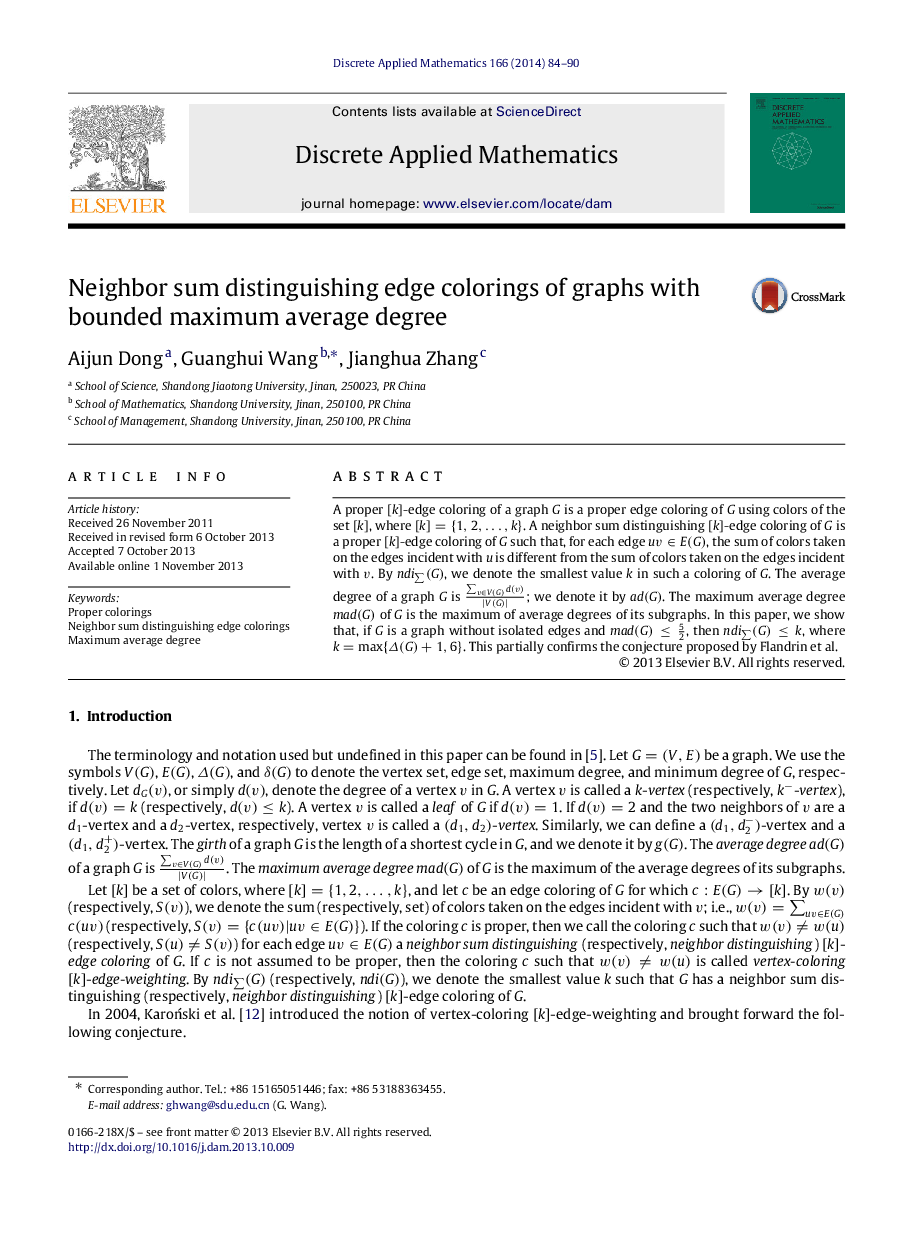| Article ID | Journal | Published Year | Pages | File Type |
|---|---|---|---|---|
| 6872299 | Discrete Applied Mathematics | 2014 | 7 Pages |
Abstract
A proper [k]-edge coloring of a graph G is a proper edge coloring of G using colors of the set [k], where [k]={1,2,â¦,k}. A neighbor sum distinguishing [k]-edge coloring of G is a proper [k]-edge coloring of G such that, for each edge uvâE(G), the sum of colors taken on the edges incident with u is different from the sum of colors taken on the edges incident with v. By ndiâ(G), we denote the smallest value k in such a coloring of G. The average degree of a graph G is âvâV(G)d(v)|V(G)|; we denote it by ad(G). The maximum average degree mad(G) of G is the maximum of average degrees of its subgraphs. In this paper, we show that, if G is a graph without isolated edges and mad(G)â¤52, then ndiâ(G)â¤k, where k=max{Î(G)+1,6}. This partially confirms the conjecture proposed by Flandrin et al.
Keywords
Related Topics
Physical Sciences and Engineering
Computer Science
Computational Theory and Mathematics
Authors
Aijun Dong, Guanghui Wang, Jianghua Zhang,
